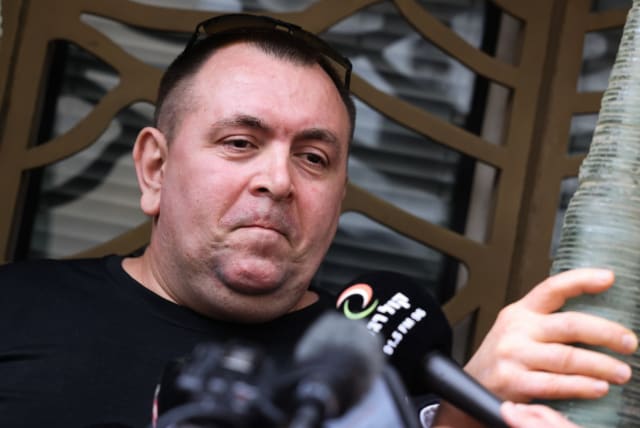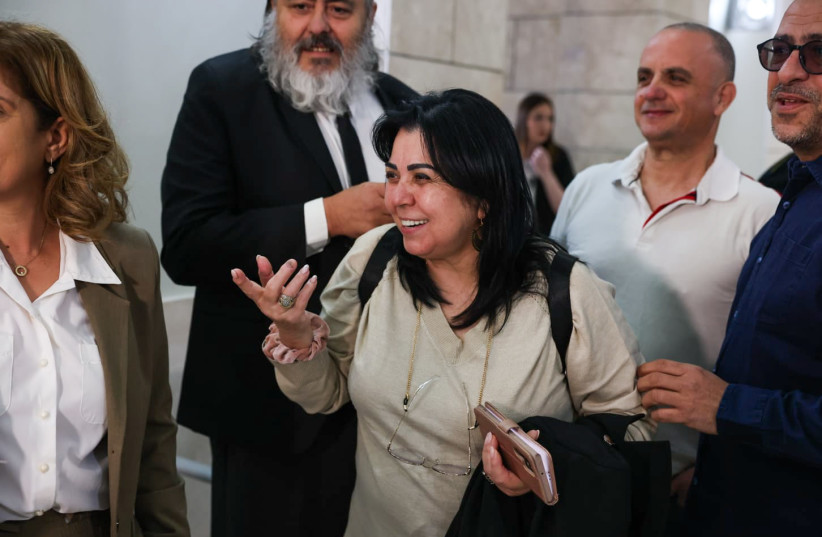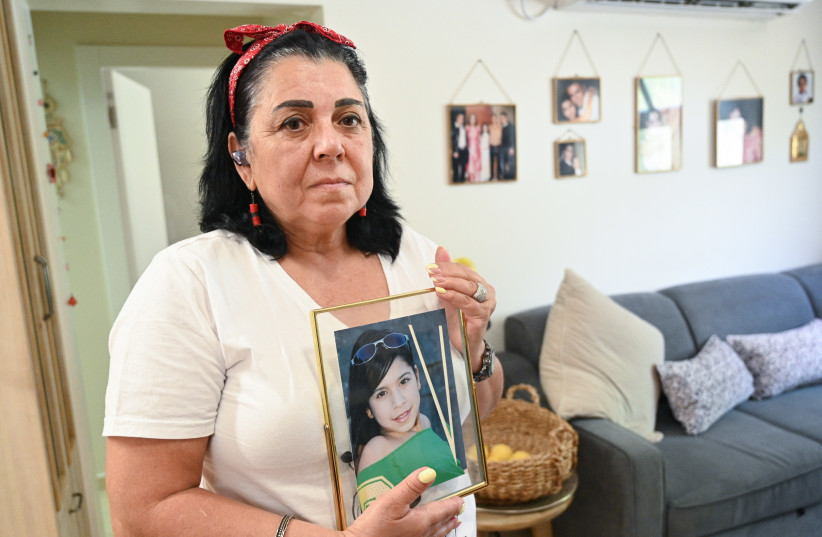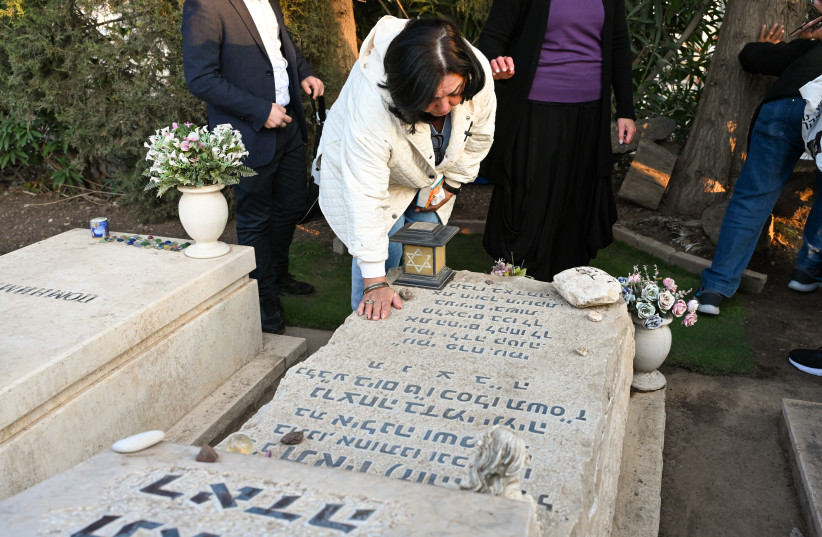16 years on: Roman Zadorov acquitted of Tair Rada's murder

Following his acquittal, Zadorov fought back tears, saying simply that "the truth won. I want to go home, to my children."
Roman Zadorov was acquitted of Tair Rada’s murder by the Nazareth District court on Thursday morning in a retrial of his 2010 conviction after new evidence brought his guilt into doubt.
Judges Asher Kula and Danny Sarfati were in favor of the acquittal, with Judge Tammar Nissim Shai in dissent. The majority opinion contended that there were far too many inconsistencies in the evidence to reasonably determine that Zadorov was the murderer.
“The truth won,” Zadorov said while fighting back tears outside the courthouse after his acquittal. “I want to go home, to my children.”
Zadorov’s sister said “we will start a better life, from here on.”
According to the majority opinion, Zadorov’s confession of cutting the throat of 13-year-old Rada in 2006 – in a bathroom stall in the Katzrin school where he worked as a custodian – was false and full of contradictions.

Zadorov had retracted the confession days after giving it. Sarfati noted that it was preceded by a mental breakdown and that the custodian may have believed that the punishment would be mitigated if he had admitted to the crime.
Kula said that “the findings at the scene did not match the defendant’s confession.”
Sarfati also said that, “after examining the details, I came to the conclusion that the confession is nothing more than a hollow, weightless recitation of statements and scenarios.”
Nissim Shai had disputed that there were contradictions in the confession and said that it was convincing. She said that Zadorov shared details that could only have been known by the killer, and he had lied enough to bring his character into question. She argued that there was no confession of greater weight than that of the accused.
No satisfactory motive was given for Zadorov to kill Rada, Kula and Sarfati said. The prosecution’s narrative that he had flown into a rage after Rada had asked for cigarettes and insulted him when she refused was disputed by testimony of her friends who said that she hated the smell of cigarette smoke. There was also no past conduct by Rada in line with this story.
The prosecution’s characterization of Zadorov as both a calculating “super chess player” mastermind and an impulsive sexual degenerate were in contradiction with one another, according to Kula.
“This is not a sadist, a sophisticated manipulator subject to uncontrollable fits of rage, capable of murdering a little girl,” the judge said in his assessment of Zadorov.

“The attempt to present the defendant as an explosive, deviant and violent person is a complete failure on our part,” said Sarfati.
Sarfati questioned why Zadorov, if he were indeed guilty, would commit the crime in his workplace in broad daylight, and left work items in the bathroom that could be tied to him. It was further challenged as to how a guilty person would leave such a violent crime scene covered in blood with no witnesses, and had managed to clean himself off and engaged in small talk instead of fleeing the scene.
During the trial, there was debate about the murder weapon used. Some experts testified that a straight-edged blade was used, with prosecutors suggesting an exacto-knife regularly used by Zadorov in the course of work. They alleged that he had removed and discarded the blade used in the killing. Nissim Shai noted that Zadorov had a love of knives and knowledge of their use. However, other experts brought this narrative into doubt by testifying that a wound on the victim’s chin was made by a serrated edge.
The majority opinion also questioned the lack of forensic evidence clearly tying Zadorov to the scene.
Nissim Shai said that she “found the evidence presented to be tight and well-founded. It holds, beyond any reasonable doubt, the proof of the defendant’s guilt.”
“Absence does not constitute evidence,” said Kula – and, as stated by Sarfati, “How is it that in such a chaotic scene like in our case, which includes a fight, a scuffle, cuts and placing the body on the toilet, there were no fingerprints or any other forensic findings indicating the accused at the murder site?”
No blood was found on the defendant’s shoes, but foreign footprints were found in the cubicle. Due to the drying of blood by the time emergency services personnel arrived, the footprints could not be attributed to them.
Olga Kravchenko, Adir Habani and the evidence at the scene
Hair found at the scene also did not match Zadorov, though Nissim Shai argued that it did not necessarily belong to the killer. A July 2022 mitochondrial DNA test of the hair showed an inconclusive match to Adir Habani, the former partner of another possible suspect in the murder case – Olga Kravchenko.
Kravchenko had been a key witness against Zadorov, used by the prosecution to highlight that the custodian was the sole plausible witness.
Kula ordered the continued investigation into the DNA evidence and the possibility that it did indeed belong to Habani. Zadorov and his lawyers have alleged Kravchenko to be the true killer, and Rada’s mother, Ilana, has previously called for the arrest of both Kravchenko and Habani.
Kravenchko was accused of the murder by Habani, who claimed at the time that she had worn his clothes in order to carry it out.

To date, no hair with a mitochondrial profile that matches either Zadorov or Kravchenko has been received.
Following the conclusion of the trial, Ilana Rada exited the courtroom, and declared that “Justice has been done, but the war is only just beginning.”
While her husband believes Zadorov to be his daughter’s killer, she had consistently argued for Zadorov’s innocence. The victim’s mother contended that the Police and State Attorney’s Office had framed the Ukrainian immigrant. Former Shin Bet deputy director Itzhak Ilan also joined her in accusations of law enforcement misconduct in recordings leaked after his death.
State Attorney Shai Nitzan was accused by expert witnesses and a Justice Ministry inquirer of cherry-picking information and suppressing elements that undermined the case. Nitzan has denied these allegations.
The controversy about the investigation and prosecution grew even as Zadarov was sentenced to life in prison.
New evidence led the High Court of Justice to order the lower courts to reexamine the case in 2013, but Zadorov’s conviction was upheld in 2014. Zadorov filed multiple appeals – the High Court again upheld the verdict in 2015 – but in July 2021, it ruled for a retrial. In August of that year, Zadorov was released to house arrest. The verdict of the highly publicized case had been delayed multiple times.
The intense public interest in the case was referenced by Kula, who said that despite this, the court had ignored the media storm when deliberating the verdict. The case spawned rumors and theories, such as those of local teenagers committing the murder and a cover up by teachers. Zadorov was seen by some as vulnerable for prosecutors to pin the crime onto, as he had settled in Israel under unstable legal circumstances. Kula said he hoped that the verdict would calm the public furor over the case.
“An innocent girl of about 13 years old, she died in a brutal murder in what was supposed to be a shelter,” said Kula. “The school where she acquired tools for life, became a murder scene where the life of the late Tair Rada was taken. Our hearts and condolences go out to her family.”
